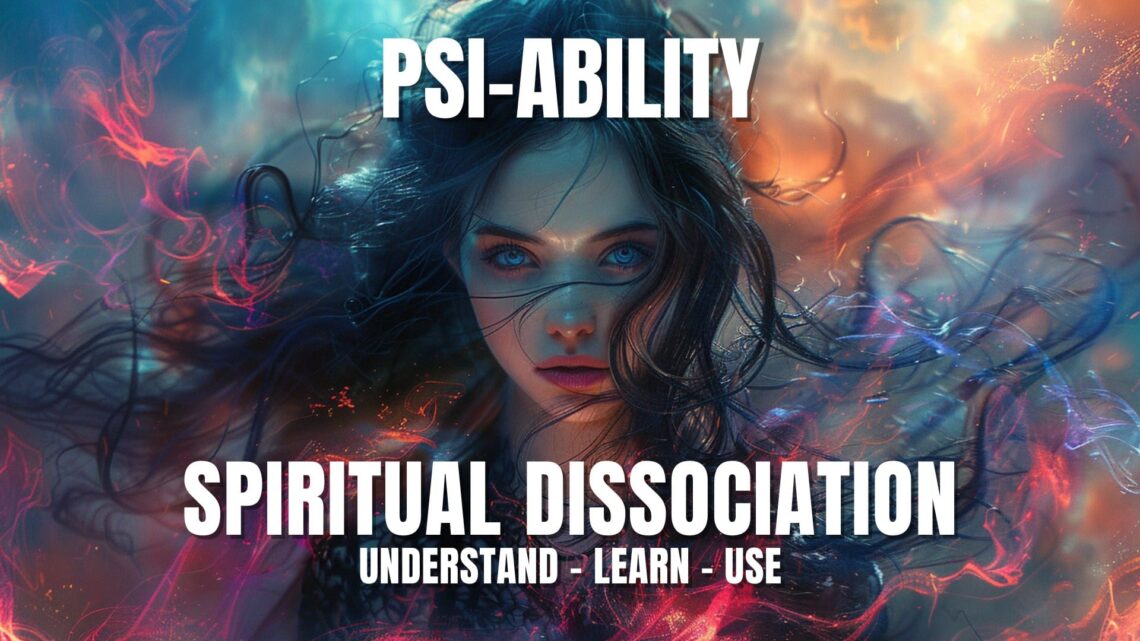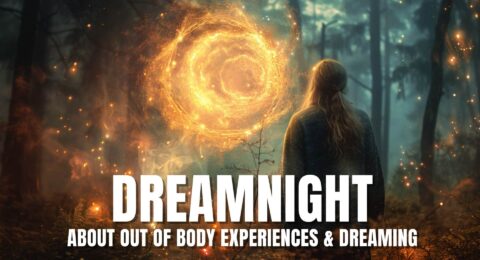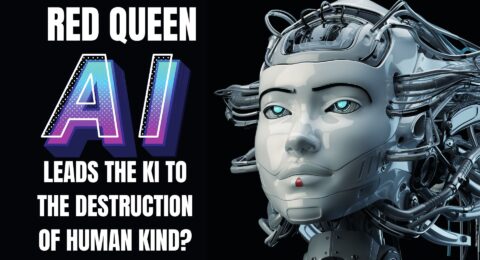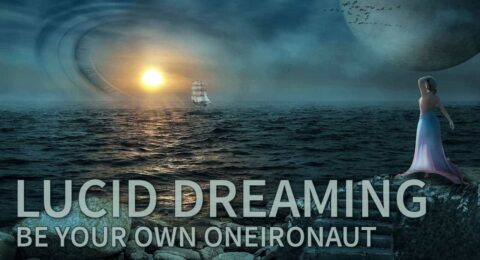
Dissociation: The Superhero Power that Slumbers in us
Superheroes came to their super power on the strangest way. Often they were shocked at first, irritated and wanted to get rid of it as soon as possible. A superpower is not that easy to control, because it hasn’t been given with a manual…
Superpowers in Movies
Superpowers are portrayed polarized not only in the movies, but also as internal conflicts in the superhero itself. He disguises himself in order to protect his bourgeois identity in everyday life; he roams around at night to use his super-ability for the good and discovers the conflict of two personalities in himself who are in dispute about who you really are. So Spiderman argues with Peter Parker and Superman with Clark Kent, an inner conflict within in the everyday life and within the inner superhero.
To possess a super-ability is a curse or a blessing. How to decide this, as soon as you have found your own superpower,’ is up to you. Dissociation is one of the superpowers that a person can activate. Anyone who tries to activate it intentionally is very different from those who simply fell into that ability. The latter then strongly tend to consider themselves victims of dissociation and seek medical or psychological advice.
Out of Body Experiences
It’s not much different with the super-power “out of body experience“, the art of detaching oneself from his physical body at night and traveling as a ghost. For some people, this ability is very desirable and even attends seminars to gain it, while others have been given out of body experiences in the cradle or they suddenly experience this and then their hair stand on end. They then seek a way to lose that superpower again, and if they go to psychiatry and have to be treated with psychotropic drugs. So everyone decides for themselves whether a superpower, which suddenly activates itself in everyday life, is a curse or a blessing.
Astral journey is called ‘out-of-body experience’ or mastery of the ‘dream body’ in spiritual circles, but in psychology it is called a schizoid personality disorder. People who can perceive astral beings, spirits and angels are placed in the same drawer in the psychology. To consider dissociation as a spiritual superpower is not as widespread as knowledge about these out of body experiences. Psychology defined dissociation many decades ago and consider this superpower to be a mental illness that has to be eliminated as soon as it activates itself within the DNA of a human being. But the whole spiritual realm is, according to psychologists, in most cases a schizoid or dissociative personality disorder when talking about paranormal or inner abilities.
Carl Gustav Jung, Sigmund Freud and Albert Einstein
Since you can turn and squirm, as you like, for the classical psychology, this is no superpower since Sigmund Freud, but super morbid. But rarely do psychologists, and those who believe in classical psychology and loves to defend their principles, know that Freud was a good friend of Albert Einstein. They often met and researched telepathy together. Freud, in collaboration with Carl Gustav Jung, also researched dreams, learned to interpret them and tried to explore the psyche in a more subconscious way with hypnosis. Freud and Jung were, strictly speaking, spiritual scientists.
Unfortunately, the spiritual-interested side of these psychologists was hardly mentioned, the psychiatry and continuing work of other psychologists was mostly based on a functioning psychiatric system that only serves society. This system still exists today. The laws, on which psychiatrists refer, were created in the Third Reich and have not been changed yet. Why change something if it serves society and the economy quite well?
Of course, psychologists and psychiatrists also exist now, who are more modern and have recognized the connection between psychological “desease” and spirituality. These are mostly modern psychologists who have updated the old knowledge and support a fusion between constructive psychology and spirituality. Because the spiritual knowledge is thousands of years old, while psychology can not yet have that age. Dissociation is considered disadvantageous in psychology.
A condition in which depersonalization, self-alienation, derealization or other schizoid disorder can occur. But how can one interpret these concepts differently than they are presented in psychology? The term dissociation in psychology is considered, at least to a large extent, as a breakdown of standard mental functions that influence perception, identity, consciousness, and memory.
A dissociative “disorder” is usually triggered by traumatic experiences or by chemical substances. And it is at this point that you can already see where the bridge between psychology and spirituality is. In addition, the psychological terminology or name and interpretation is listed and a comparison to the spiritual interpretation follows:
(1)
Psychological: Dissociative Amnesia (see ICD-10 under F44.3)
When this occurs, the affected person lacks portions of their memories from the past, or mixes memories of the past with scenes that have taken place or even never happened, meaning that they can no longer distinguish which memories took place and which did not.
Spiritual: Internal perception of alternative realities The affected person experiences an expansion of consciousness in which they can perceive alternative realities or alternative selves, including their memories. Since the person does not realize that they have expanded their consciousness, they usually do not know that they are different egos living in their own realities and begin to mix the perceptions and memories. The people around them are irritated because they have not expanded their consciousness and can not perceive the alternative realities.
(2)
Psychological: Dissociative Trance States (see ICD-10 under F44.3)
The affected person believes that they are losing the sense of their personal identity and that they are conscious of a new identity attributed to a spirit or deity. Spiritual: channeling and / or telepathic channeling Channeling is a skill in which one establishes a telepathic contact with a disincarnated personality in order to gain knowledge of it. For example, to a deceased personality, an “angel”, spirit guides, beings from higher or lower levels of being. The telepathic focus can be focused on any personality, as all being is stored and accessible in the collective consciousness. An obsession is defined in that the affected person is ready to let his mind temporarily be pushed back so that the focused personality can speak. This can be practiced in spiritual sessions of a medium.
(3)
Psychological: Dissociative seizures (F44.5)
This results in sudden seizures, which are similar to an epileptic seizure, but you remain aware of it and does not lose consciousness. A trance-like state can arise.
Spiritual: Frequency adaptation to the psychic body The psychic body is an exact duplicate of the physical body and is also called astral body. However, the materiality of this body is higher, ie has a higher frequency. Spiritual people who want to experience out-of-body experiences know the transitional state, which is characterized by the clear feeling of vibration, inner shaking, and the like. shows. If a person tries to do this in their everyday consciousness without lying down and meditating in a relaxed manner, there may be sudden vibrations that may be reminiscent of convulsions. The normal state of consciousness will change to an altered one that equals a trance.
(4)
Psychologically: Dissociative sensory and sensory disorders (F44.6)
In this case, the affected person loses part or all of the feeling for his body, occasionally seeing, hearing and smelling.
Spiritual: As with (3), the frequency adjustment takes place here, ie the transition from the physical to the mental body. The perception or senses are transmitted into the psychic body, but have not yet been completed or are delayed by the anxiety of the person concerned.
(5)
Psychological: other dissociative disorders (ICD-10, F44.80 and F48.1)
These include sometimes the so-called pseudodebility, the Gansersyndrome and the dissociative identity disorder. The affected person perceives two or more different identities in their own consciousness. Is often associated with schizophrenia. Furthermore, there are sensations of depersonalization (person feels strange in one’s own body), autoscopy (person perceives himself twice or from outside within another body) and derealisation (the everyday world looks alien and unreal) in connection with panic attacks. At the same time, fantasies, dreaminess and easier suggestibility also occur.
Spiritual: Perception of the personality aspects and the psychic body An intentional or sudden expansion of consciousness perceives the personality aspects of one’s own psyche, which can sometimes feel as if they are different from the normal everyday life of one’s self. This expresses itself through different character traits and emotional states. The sensations of depersonalization (the perception shifts into the psychic body), autoscopy (she recognizes that she has a second body) and derealization (the perception from the psychic body is more essential or clearer, but alienating to a beginner, which begins to manifest itself in this second body, a shifting of consciousness) associated with panic attacks associated with the self-preservation instinct of the physical body, since the change from this body to the psychic body naturally also occurs at the moment of death. The “dreaminess” and “fantasies” mentioned in psychology occur because the person receives perceptions from alternative realities and/or from higher states of consciousness, which are inaccessible to people from the familiar environment and then dismiss them as daydreams or fantasies. However, for the data subject, the information received is fully valid within the perceived alternative reality, but understandably not in the familiar everyday world. Also, memories from one or more alternative realities can enter consciousness, so that a beginner can no longer correctly differentiate them from the memories of their everyday life.
Pierre Janet and Marijuana
With the appropriate exercise and learning to differentiate, the affected person succeeds in separating the realities from each other and correcting the mingled memories correctly. The first historical data on the dissociation show up in 1896 in discussions between philosophers and psychologists from France about personality split, disintegration and consciousness fragmentation in a work by Pierre Janet (*1859 †1947) in conjunction with the use of marijuana.
High Doses of DMT, LSD and Marijuana
Substances known as mind-expanding, such as marijuana (in higher doses), LSD, DMT, Salvia divinorum, Psilocybin and Mescaline, usually trigger dissociative conditions. One could say that each of these substances enables or triggers dissociation. This much faster than through a traumatic experience – which is considered in psychology as one of the causes of the emergence of dissociative states. In psychology one is anxious to return a person with dissociative “disturbances” back to society, so that he continues to become a full member or remains as such. A person who perceives alternative realities or suddenly changes over from his physical body to the psychic at work and is difficult to address, is not useful for the working world.
However, bringing a member of society to psychiatry is not a solution either, as it can no longer be a valuable member of society. Not only is branding a stay in a psychiatric hospital bad for a CV, but also health problems are to be considered when giving high doses of medication whose long-term side effects make the valid member of society ill before retirement. But this can be remedied by providing the affected person with information about what’s happening to her. These can be provided by enlightened individuals who are all familiar with and familiar with these conditions or using substances that are currently extensively researched for therapeutic use, such as LSD or Psilocybin. Not only are these 95% curable with these substances, but also people with dissociative “disorders” will be able to better understand the laws of perception and consciousness. Fears, panic attacks, victim behavior and the like result only from a lack of information and education, as a person has a strong tendency to feel as a victim to a situation when he can not understand it.
In what Way is Dissociation a Superpower?
It is an unpleasant experience for someone who suddenly encounters dissociation without any theoretical preparation. It pulls the person out of their environment and triggers previously unknown sensations. This can be very disturbing and in such moments you just want to gain as much distance as possible from it. For an experienced person who knows the dissociation, it can certainly be used constructively. The possibilities this superpower has to offer with knowledgeable handling and immediate wakefulness are as follows:
1. Configuration of countless forms of therapy (in psychological terms)
2. Fragmentation of the self and subsequent comprehensive defragmentation (in therapeutic terms)
3. Reintegration of repressed and split personality parts (therapeutically)
4. Exploration of the subconsciousness (therapeutically)
5. Enlightenment states of all kinds (in spiritual terms)
6. Self-knowledge of all kinds (in psychological and spiritual terms)
7. Lucid dreaming (also for the therapy of nightmares)
8. (Spontaneous) healing of the physical body (in medical terms)
9. Exploration of one’s own personality aspects and their configuration (also in therapeutic terms)
10. Investigation of alternative realities (also in quantum physics terms)
11. Exploring other incarnations (in spiritual terms)
12. Achieving higher states of consciousness of all kinds (in spiritual terms)
13. Development of paranormal abilities of all kinds (clairvoyance, precognition, telepathy, telekinesis, etc.)
14. Conscious change in the psychic body and its usage (in spiritual terms)
15. Reactivation of the pineal gland (in spiritual terms)
16. Time dilatations (also in terms of quantum physics)
In addition, there are many other possibilities that offer the conscious and constructive treatment of dissociation, which could still be described as undetected. Further research should be undertaken.
Such a superpower can, as mentioned, be a curse or a blessing. It only depends on how to deal with it and to what extent enlightenment is created here. The optimal education makes it possible to experience this condition as positive and to ensure comprehensive control over it.
See also:
The Books of the Matrixblogger in English
Visit the “Matrixblogger” on Youtube! Great videos about all the topics that you can find within this blog.
Sources:
Pierre Janet: L’automatisme psychologique. Félix Alcan, Paris 1889 (Reprint: Société Pierre Janet, Paris 1889/1973)
Die dissoziative Identitätsstörung – häufig fehldiagnostiziert, Deutsches Ärzteblatt. 2006, 103(47), S. A-3193, B-2781, C-2664
Wikipedia, Dissoziation
Süddeutsche Zeitung – LSD kann heilen
Die Zeit – Drogen als Hilfe zur Selbsterkenntnis
Die Welt – LSD machte Steve Jobbs zum Milliardär
Das Erste (ARD) – Ayahuasca als Heilmittel
Matrixblogger – Das Gehirn auf LSD (Teil 1-9)
SWR – Psycholytische Therapie (mit LSD)
Argauer Zeitung – Offizielle Therapie mit LSD
Badische Zeitung – Basler Forscher testen LSD als Therapie
Psychologie.ch – LSD als Hoffnung auf neue Therapieformen






